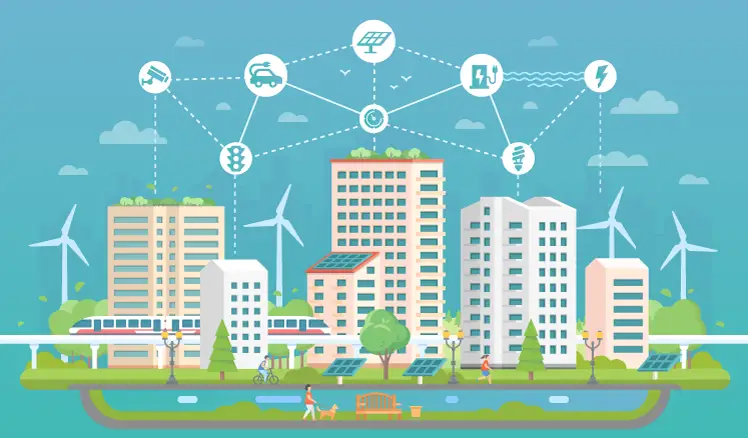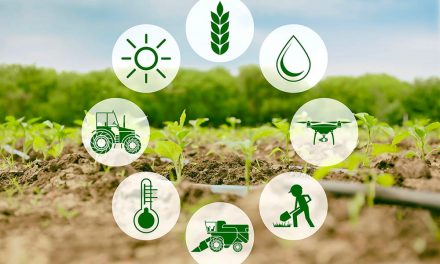The introduction of new computing technologies such as cloud computing and the internet of things has revolutionized all sectors of the global economy. Governments are adopting these technologies in the development of smart cities. This article will explain more on the topic of IoT in smart cities.
Before we explore the topic of IoT in smart cities, let us first define the term smart city.
Table of Contents
What is a Smart City?
A smart city is an urban area that uses different types of electronic Internet of Things sensors to collect data and then use insights gained from that data to manage assets, resources and services efficiently.
Which Technologies are Used in Smart Cities?
The major technologies that are used are the Internet of Things, cloud computing and big data.
What is IoT?
The Internet of Things is a system of interrelated computing devices, mechanical and digital machines provided with unique identifiers and the ability to transfer data over a network without requiring human-to-human or human-to-computer interaction.
What is Cloud Computing?
Cloud computing is the practice of using a network of remote servers hosted on the Internet to store, manage, and process data, rather than a local server or a personal computer. Cloud computing can be further broken down into 6 categories which are:
- Software as a Service
- Platform as a Service
- Infrastructure as a Service
- Public Cloud
- Private Cloud
- Hybrid Cloud
The exact function of each category is beyond the scope of this article.
What is Big Data?
Big Data is a term that describes the large volume of data , both structured and unstructured and the ways in which we study, analyse and process these data sets that are too large to be handled by traditional data-processing software.
Data that is referred to as big data has the following characteristics that are commonly known as the four ‘V’s which are volume, variety, velocity and veracity.
Major Smart City Technologies
Cities worldwide are now embracing the technologies listed above. These technologies bring various technologies such as providing better mobility, promoting safer urban environments, providing more efficient public services and more. The following are the various technologies, as well as the various uses of the technology in smart cities.
1. Sensors
The smart cities have IoT sensors in various devices that are present. These IoT devices work hand in hand with cloud computing in smart homes to provide automation of mundane tasks in the home, in traffic lights to control the flow of traffic and in cars to help improve the driving experience.
2. Communication
The various smart cities use the latest communication technologies. The first is the use of the fibre optic cable that provides a high bandwidth and extremely high speed. 4G LTE technology is used to provide users with fast internet speeds on the go as this technology is wireless and can be used in mobile devices. The latest advancement in the communication technology – 5G promises to deliver ultra-fast internet speeds, a lower latency and extremely high bandwidth. All of this is used to provide the IoT devices with instant, real time communication.
3. Big Data and IoT
IoT in smart cities generates a lot of data. These IoT devices are used to measure various parameters about the environments in which they are located. These parameters include the following: the temperature, humidity, light intensity, and electrical energy. An example is an intelligent energy monitoring system which continuously measures the amount of energy being consumed by the consumers in a particular area. This generates a lot of data that is commonly referred to as big data.
These big data sets need analytics to generate meaningful insights from the data. This is achieved through the use of advanced algorithms such as Machine Learning and Artificial Intelligence.
4. Robotics
The application of robotics is an example of IoT in smart cities. In this application, robotic technologies such as drones can be used for postal services. During the coronavirus pandemic, these drones were used to disinfect streets due to their speed and high levels of efficiency.
Robots can also be used as humanoids to attend to the information desk at public offices, as well as for room service in hotels.
Advantages of IoT in Smart Cities
1. Safety
This is the most important benefit of IoT in smart cities. Through the use of IoT cameras, real time crime mapping can be detected. The use of the data can be then used to detect crime patterns and identify problematic zones. In addition, advanced algorithms can be used to predict the incidence of crime.
2. Transportation
This is another benefit of IoT in smart cities. The transportation sector is made much more efficient for both public and private transport. In private transport, the IoT devices are used for GPS navigation, cruise control as well as for detecting potential traffic jams. This allows the drivers to avoid congested routes and use the less congested ones. In public transportation, the commuters are able to pay for a bus or train ticket in advance. Through the use of an application on a smart phone, they can detect the location of their transportation device in real time, and choose a faster mode of transportation.
3. Greener Environment
The world is becoming more and more conscious of the damage caused by human activities on the environment. IoT in smart cities is helping to reduce the damage caused by humans. This is being achieved through smart transport management. Multimodal mobility is an example in which the passengers are able to choose between all of the available transportation options. This results in lower car usage and lower levels of pollution.
4. Economic Gains
IoT in smart cities attracts companies and talent. These IoT devices and technologies such as cloud computing and big data result in a much more efficient way of life. This attracts venture capital, and thus results in an influx of investment capital.
Conclusion
IoT in smart cities has resulted in very many benefits. It has made the way of life much more efficient and less harmful to the environment. In addition, it results in the influx of capital.
We hope you enjoyed this article!




![IoT Sensors [Types of Sensors & Uses]](https://greenthrottle.com/wp-content/uploads/2020/05/IoT-Sensors-440x264.png)
